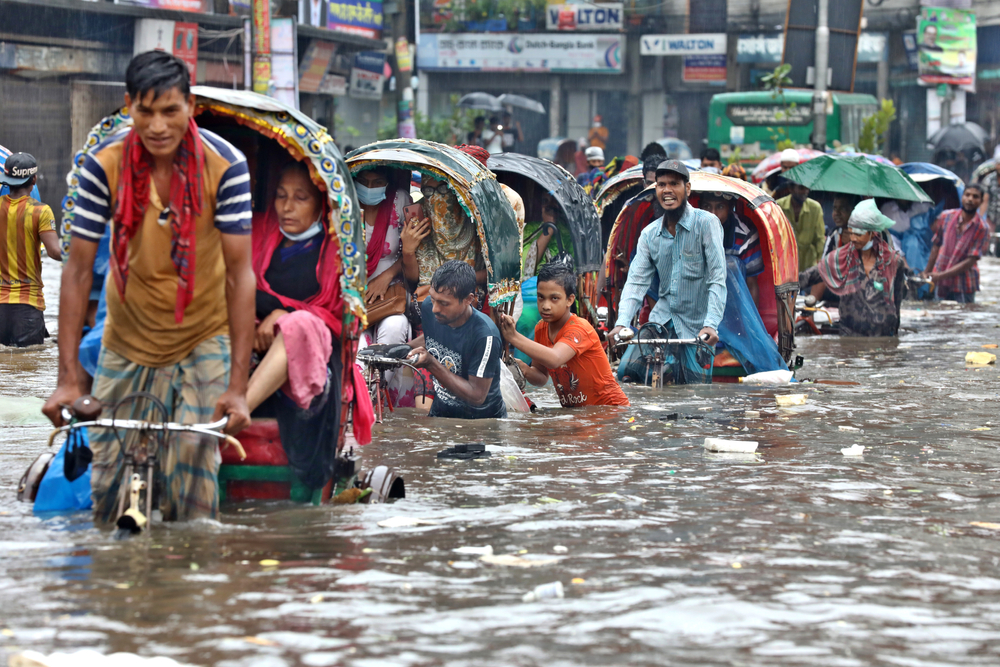Climate resilience: how software platforms help business

|
Getting your Trinity Audio player ready...
|
• Climate resilience is a new business must-have for many sectors.
• Driven by the impacts of climate change, fims need to protect their assets.
• There are a wide range of software options available to help them do just that.
The weather put on quite a show in 2023. In China, temperatures plunged to a record low of -53 degrees C. Six months later, thermometers in the country were measuring 52.2 degC – a temperature swing of more than 100 degrees. Experts warn that extreme weather events will become more frequent and more intense globally due to climate change. Given these predictions, it’s no surprise that firms are looking to build climate resilience into their operations.
On TechHQ, we’ve written about how a digital twin of the Earth is helping companies assess how they could be impacted by climate change in coming decades. But that’s by no means the only tool available to make firms more climate resilient.
Carbon emissions reporting platforms streamline the task of turning business data into a measure of a company’s environmental performance. And, increasingly, they offer more than just carbon accounting. For example, Watershed’s enterprise sustainability platform gives users access to a library of climate risks and opportunities during the report-building process.
Correntics – another provider of software designed to help businesses track and report progress towards environmental, social, and governance (ESG) goals – gives customers access to real-time hazard data. “Using this information, companies can proactively respond to potential interruptions, reduce physical damages, and mitigate severe financial impacts,” writes the Swiss firm.
What’s more, as regulations mandate environmental reporting, ESG platforms could become a natural gateway for companies to assess how prepared they are for a warming planet with more rain and higher winds.
Facilities lacking climate resilience risk direct damage from extreme weather events. Firms may also be exposed to environmental risk through their supply chains. Having visibility of where interruptions could occur gives teams the opportunity to make contingency plans.
In some cases, there may be little that can be done to avoid natural disasters. But climate resilience isn’t just about dodging adverse weather, it’s also about being able to absorb and recover from those shocks.
Business owners may want to take note of which regions are ahead in adapting infrastructure to better cope with climate change. The city of Rotterdam is aiming to be 100% climate resilient by 2025, and features a large rowing lake designed as a significant water store to protect downtown residents. Roads are being made more porous, and numerous green areas are being introduced to improve the urban environment.
Rotterdam is a member city of C40 – a network of municipalities around the world which have teamed up to improve climate resilience for their inhabitants. And progress in making urban environments less exposed to climate change can be seen from above.
Software platforms built upon satellite and related data can provide users with a rapid assessment of the climate resilience of company assets. Taking Earthscan – a software platform offered by Mitiga Solutions – as one such example, all that’s needed to get started is a list of latitude and longitude pairs corresponding to the locations of interest.
COP28 delivered the Emirates Framework for Global Climate Resilience – a step change that will put adaptation focus and action on a par with mitigation by galvanizing not just governments, but also all non-party stakeholders to speed up and scale up action for adaptation.
Find… pic.twitter.com/ERbVtoSVi3
— COP28 UAE (@COP28_UAE) January 4, 2024
“EarthScan covers seven hazard types: flooding, both coastal and riverine, extreme wind, heat stress, drought, precipitation, and wildfire,” write the developers. The tool reports across time horizons from a baseline of 1970 up to 2100 and can model ‘business as usual,’ ‘2040 emissions peak,’ and ‘Paris agreement aligned’ climate scenarios.
The European Commission’s Directorate-General for Research and Innovation lists the scaling up of digital tools as a key enabler in helping citizens (and companies) to better adapt to the unavoidable impacts of climate change. And hardware developments are playing a role too.
Exascale supercomputers, capable of modeling a year’s weather in a day, pave the way for better forecasts by tackling one of the largest sources of uncertainty in climate projections – cloud behavior. Adding this information to the mix will also contribute to raising climate resilience.
For example, mapping software has long helped road transport operators to route goods from A to B. But modern systems advise users on much more than just the quickest combination of directions to take. Speaking with Trimble Maps, TechHQ learned how mapping software can help trucks avoid low-hanging branches. Digital tools can also recommend roads that are less liable to flooding.

Climate resilience can’t stop the rain from falling – but it could re-route your logistics fleet away from trouble spots.
AI bridges the climate resilience gap
Integrating climate science into business decision-making isn’t always straightforward. Models aren’t necessarily built to be used directly by non-experts. However, AI could help to bridge the gap – a point made by Shivam Singh and Manish Kumar Goyal (civil engineers based at the Indian Institute of Technology Indore) in their 2023 paper Enhancing climate resilience in businesses: The role of artificial intelligence.
“Taking advantage of big data analytics and machine learning algorithms, businesses can extract important insights from vast climate datasets, letting them assess vulnerability and identify potential risks and impacts,” the researchers explain.
ClimateLens – an enterprise climate resilience platform developed by ClimateAI – puts AI to work to turn datapoints from multiple sources into actionable insights. The software lets users carry out risk modeling and generate probabilistic forecasts examining the likelihood of extreme temperatures, flooding, and droughts.
EM-DAT – the International Disaster Database maintained by the Centre for Research on the Epidemiology of Disasters (CRED) in Brussels, Belgium – reports that the 387 natural hazards recorded in 2022 (in its most recent yearly review) corresponded to USD 223.8 billion in economic damage.
Flooding and storms were by far the most occurring disaster types – both in 2022 and on average from 2002 to 2021. And Everbridge – a company that helps clients anticipate, mitigate, respond to, and recover from critical events – best sums up the need for organizations to improve their climate resilience in three chilling words.
“Adapt or fail.”









